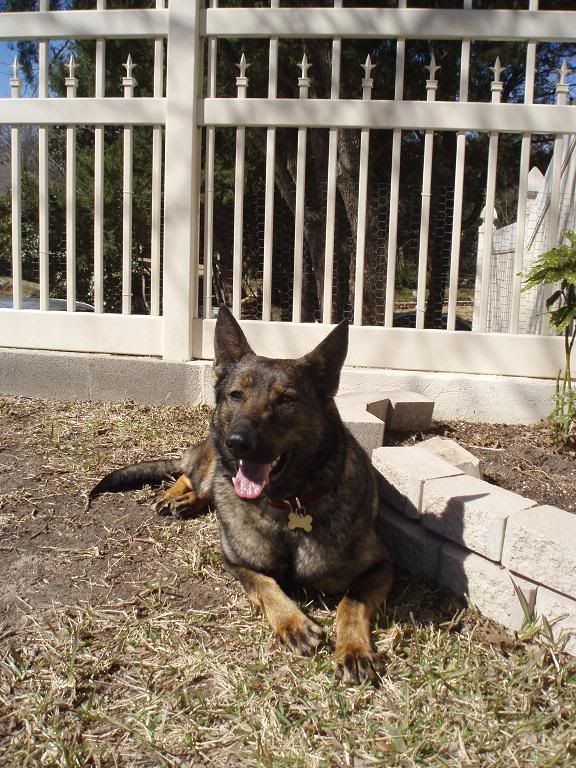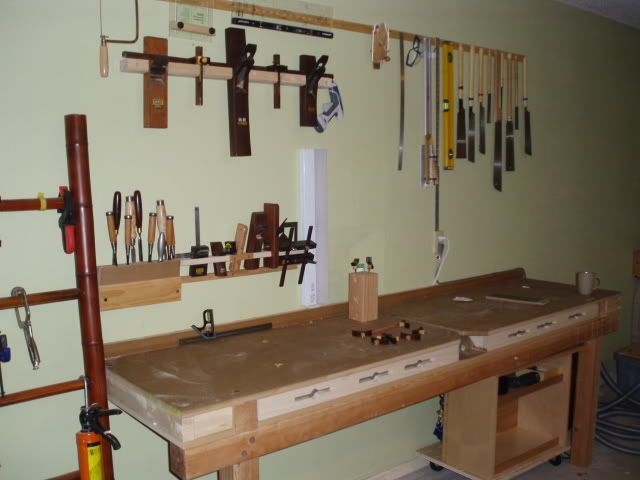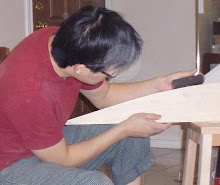 I'm going to stray from the usual topic today. This weekend I had a chance to buy brisket at 99 cents a pound at the local Super Target. I thought I would try to smoke a Brisket now that I have a back yard now and a new vertical water smoker from Brinkman ($59 Home Deopt). This is my way of multi-tasking; make a bookcase while roasting a rack of rib.
I'm going to stray from the usual topic today. This weekend I had a chance to buy brisket at 99 cents a pound at the local Super Target. I thought I would try to smoke a Brisket now that I have a back yard now and a new vertical water smoker from Brinkman ($59 Home Deopt). This is my way of multi-tasking; make a bookcase while roasting a rack of rib. To get a moist and tender brisket, the tough cut of meat is slowly heated to about 190 degrees internal temperature. This slow and steady process breaks down the tough muscle and its' membrane and turns it into tender juicy meat. The formula is 1.5 hours per pound at about 220 degrees. This adds up to about 15 hours of smoking for a 10 lbs brisket to hit perfection. It’s hard to dedicate this amount of time for the average person, so I’ll use some time management to get good result without spending 15 hours babysitting a brisket.
- The meat is probably the most important part of the process. Buy a smaller 8 pounds brisket and cooking time gets cut down to 12 hours. This is much more manageable than the larger sizes as it fits in the smoker with enough room for the smoke to surround it. Find a brisket with good marbling of fat and meat. Since this is hard to see through the plastic vacuum packs, pick a piece that is soft and bendable. Meat with higher fat marbling bends and flexes more than leaner cuts.
- Preparation; leave the brisket out all day to reach room temperature. Smoking a refridgerated cold brisket slows the process down tremendously. Some people also advise s you to marinade it in a slight acidic bath to break down the protein. Ignore it since heating it correctly will do the job. Half hour before it goes into the smoker, rub the meat with BBQ spice rub. I make my own rub with salt, pepper, paprika, cayenne peppers, sugar and MSG. Putting the rub on too long will it dry out the meat. Don't be afraid to put a lot on, most will fall off or burn off. I don't use fancy herbs and spices, the prolonged heating session will often neutralize any herbal flavor. Some people tells you to trim the fat cap to 3/8 of an inch thick. I Leave the fat on, I just cut slashes in the fat cap and force some of the rub in there as well.
- Heat the meat. This depends on what type of heating system you use, I use to throw it in the oven at 225 degrees for 12 hours and then drain the fat dripping occasionally. I now have a vertical water smoker that works well. Hot charcoal briquettes are put on the bottom pan along with wet hardwood chips to produce the heat and smoke. A water pan is place between the meat and the fire to block the direct heat and the water keeps the temperature below 212 degrees, it's so simple.
- Maintaining the heat is the hardest part for the charcoal user. It is hard to control the heat by adjusting the vents, and the change in temperature would need a half hour before it can be registered by the thermometer. So I would have to rely on experience to judge the temperature change. I think the flavor is best with charcoal and hardwood so I am willing to put in the effort. I do have to modify the Brinkman smoker. I am having problem with the ashes smothering the coals as it burns in the coal bin. The goal is to maintain a constant heat throughout the session with minimal effort. I think a coal grate would work so that ashes would fall away from the red glowing coals.
- Simpify. Keep adding coal and wood chunks or chips for the first six hours, replenish the water and try not to open the smoker door too often. This cools everything down and slows down the cooking session. If I started the smoking process at 6pm, and trust my ability to make a fire that stays lit by giving it just enough air and fuel, then at midnight, the outside of the brisket would’ve turned black from the smoking. This is not burnt as the blackness is actually a very thin layer, the red smoke ring follows, this is a physical sign that smoke had penetrated the meat and is filled with this unique flavor. I would then take the brisket and place it in a preheated oven at 210 - 225 degrees. The oven will maintain the constant heat needed while I get some sleep. I will wake up to an amazing smell in the kitchen and moist and tender brisket.
- Leave the brisket out for a hour to cool, slice some across the grain thinly and have some for breakfast. Then wrap the remainder tightly in plastic wrap to keep the moisture. This can stay out for the afternoon BBQ.










